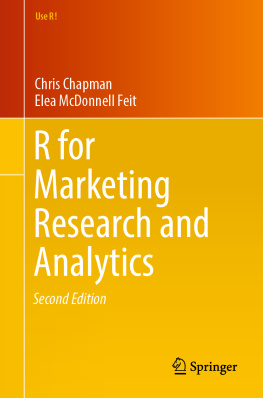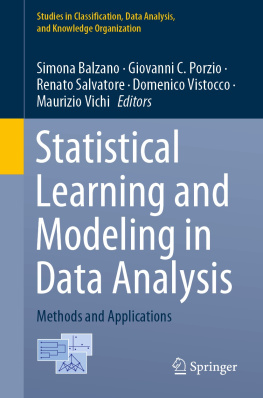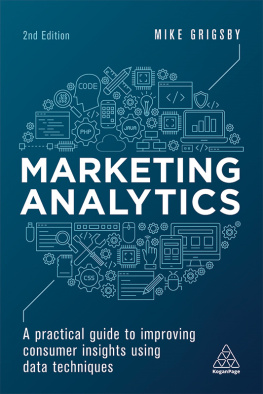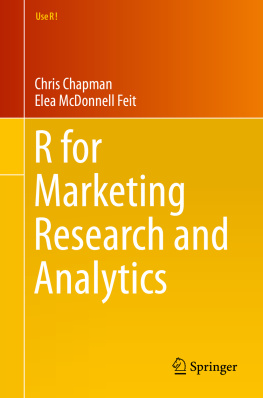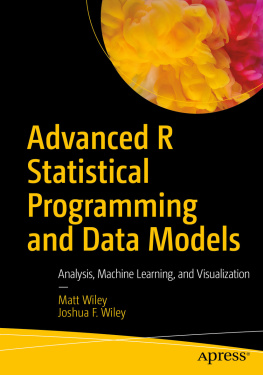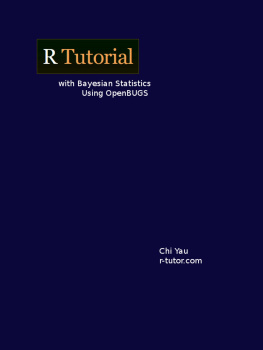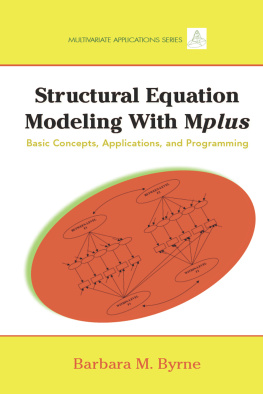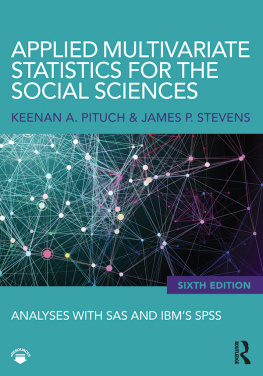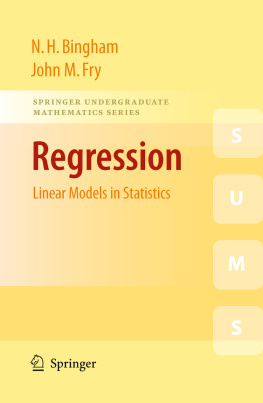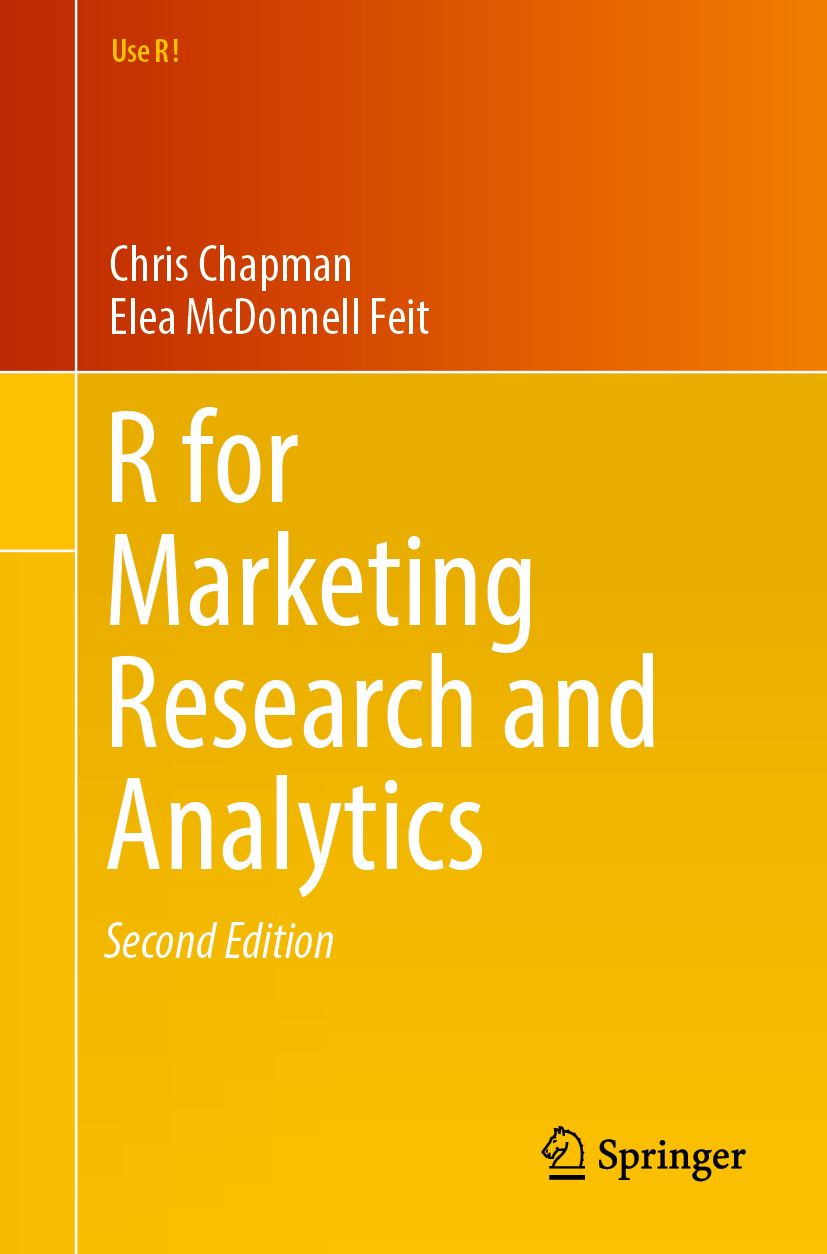Use R!
Series Editors
Robert Gentleman
Division of Public Health Sciences, San Mateo, CA, USA
Kurt Hornik
Department of Finance, Accounting and Statistics, WU Wien, Wien, Austria
Giovanni Parmigiani
Dana-Farber Cancer Institute, Boston, USA
This series of inexpensive and focused books on R will publish shorter books aimed at practitioners. Books can discuss the use of R in a particular subject area (e.g., epidemiology, econometrics, psychometrics) or as it relates to statistical topics (e.g., missing data, longitudinal data). In most cases, books will combine LaTeX and R so that the code for figures and tables can be put on a website. Authors should assume a background as supplied by Dalgaards Introductory Statistics with R or other introductory books so that each book does not repeat basic material.
More information about this series at http://www.springer.com/series/6991
Chris Chapman and Elea McDonnell Feit
R for Marketing Research and Analytics 2nd ed. 2019
Chris Chapman
Google, Seattle, WA, USA
Elea McDonnell Feit
Drexel University, Philadelphia, PA, USA
ISSN 2197-5736 e-ISSN 2197-5744
Use R!
ISBN 978-3-030-14315-2 e-ISBN 978-3-030-14316-9
https://doi.org/10.1007/978-3-030-14316-9
Library of Congress Control Number: 2019932720
Springer Nature Switzerland AG 2019
This work is subject to copyright. All rights are reserved by the Publisher, whether the whole or part of the material is concerned, specifically the rights of translation, reprinting, reuse of illustrations, recitation, broadcasting, reproduction on microfilms or in any other physical way, and transmission or information storage and retrieval, electronic adaptation, computer software, or by similar or dissimilar methodology now known or hereafter developed.
The use of general descriptive names, registered names, trademarks, service marks, etc. in this publication does not imply, even in the absence of a specific statement, that such names are exempt from the relevant protective laws and regulations and therefore free for general use.
The publisher, the authors and the editors are safe to assume that the advice and information in this book are believed to be true and accurate at the date of publication. Neither the publisher nor the authors or the editors give a warranty, express or implied, with respect to the material contained herein or for any errors or omissions that may have been made. The publisher remains neutral with regard to jurisdictional claims in published maps and institutional affiliations.
This Springer imprint is published by the registered company Springer Nature Switzerland AG
The registered company address is: Gewerbestrasse 11, 6330 Cham, Switzerland
Preface
We are here to help you learn R for marketing research and analytics.
R is a great choice for marketing analysts. It offers unsurpassed capabilities for fitting statistical models. It is extensible and able to process data from many different systems, in a variety of forms, for both small and large data sets. The R ecosystem includes the widest available range of established and emerging statistical methods and visualization techniques. Yet its use in marketing lags other fields such as statistics, econometrics, psychology, and bioinformatics. With your help, we hope to change that!
This book is designed for two audiences: practicing marketing researchers and analysts who want to learn R and students or researchers from other fields who wish to review selected marketing topics in an R context.
What are the prerequisites? Simply that you are interested in R for marketing, are conceptually familiar with basic statistical models such as linear regression, and are willing to engage in hands-on learning. This book will be particularly helpful to analysts who have some degree of programming experience and wish to learn R. In Chap. , we describe additional reasons to use R (and a few reasons perhaps not to use R).
The hands-on part is important. We teach concepts gradually in a sequence across the first seven chapters and ask you to type our examples as you work; this book is not a cookbook-style reference. We spend some time (as little as possible) in Part I on the basics of the R language and then turn in Part II to applied, real-world marketing analytics problems. Part III presents a few advanced marketing topics. Every chapter shows the power of R, and we hope each one will teach you something new and interesting.
Specific features of this book are:
It is organized around marketing research tasks. Instead of generic examples, we put methods into the context of marketing questions.
We presume only basic statistics knowledge and use a minimum of mathematics. This book is designed to be approachable for practitioners and does not dwell on equations or mathematical details of statistical models (although we give references to those texts).
This is a didactic book that explains statistical concepts and the R code. We want you to understand what were doing and learn how to avoid common problems in both statistics and R. We intend the book to be readable and to fulfill a different need than references and cookbooks available elsewhere.
The applied chapters demonstrate progressive model building. We do not present the answer but instead show how an analyst might realistically conduct analyses in successive steps where multiple models are compared for statistical strength and practical utility.
The chapters include visualization as a part of core analyses. We dont regard visualization as a standalone topic; rather, we believe it is an integral part of data exploration and model building.
You will learn more than just R. In addition to core models, we include topics such as structural models and transaction analysis that may be new and useful even for experienced analysts.
The book reflects both traditional and Bayesian approaches. Core models are presented with traditional (frequentist) methods, while later sections introduce Bayesian methods for linear models and conjoint analysis.
Most of the analyses use simulated data, which provides practice in the R language along with additional insight into the structure of marketing data. If you are inclined, you can change the data simulation and see how the statistical models are affected.
Where appropriate, we call out more advanced material on programming or models so that you may either skip it or read it, as you find appropriate. These sections are indicated by * in their titles (such as This is an advanced section* ).
What do we not cover? For one, this book teaches R for marketing and does not teach marketing research in itself. We discuss many marketing topics but omit others that would repeat analytic methods. As noted above, we approach statistical models from a conceptual point of view and skip the mathematics. A few specialized topics have been omitted due to complexity and space; these include customer lifetime value models and econometric time series models. In the R language, we do not cover the tidyverse (Sect. ) because it is an optional part of the language and would complicate the learning process. Overall, we believe the topics here represent a great sample of marketing research and analytics practice. If you learn to perform these, youll be well equipped to apply R in many areas of marketing.

